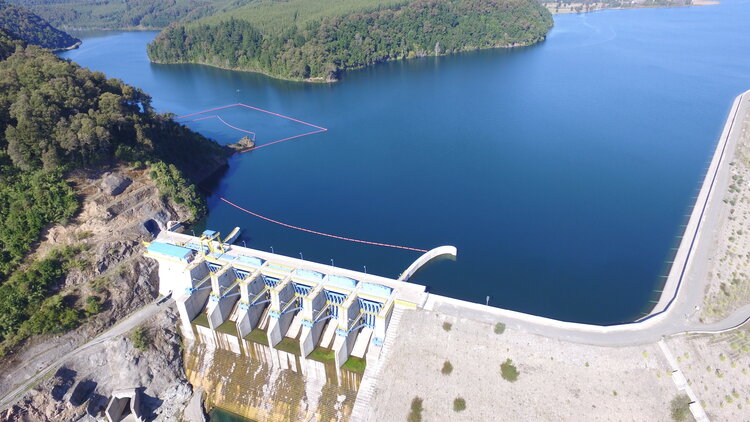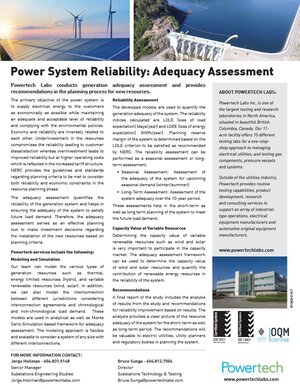Powertech Labs conducts generation adequacy assessment and provides recommendations in the planning process for new resources.
The primary objective of the power system is to supply electrical energy to the customers as economically as possible while maintaining an adequate and acceptable level of reliability and complying with the environmental policies. Economy and reliability are inversely related to each other. Underinvestment in the resources compromises the reliability leading to customer dissatisfaction whereas overinvestment leads to improved reliability but at higher operating costs which is reflected in the increased tariff structure. NERC provides the guidelines and standards regarding planning criteria to be met to consider both reliability and economic constraints in the resource planning phase.
The adequacy assessment quantifies the reliability of the generation system and helps in ensuring the adequacy of the system to satisfy future load demand. Therefore, the adequacy assessment serves as an effective planning tool to make investment decisions regarding the installation of the new resources based on planning criteria.
Powertech services include the following:
Modeling and Simulation
Our team can model the various types of generation resources such as thermal, energy limited resources (hydro), and variable renewable resources (wind, solar). In addition, we can also model the interconnection between different jurisdictions considering interconnection agreements and chronological and non-chronological load demand. These models are used in analytical as well as Monte Carlo Simulation based framework for adequacy assessment. The modeling approach is flexible and scalable to consider a system of any size with different interconnections.
Reliability Assessment
The developed models are used to quantify the generation adequacy of the system. The reliability indices calculated are LOLE (loss of load expectation) (days/year) and LOEE (loss of energy expectation) (MWh/year). Planning reserve margin of the system is determined based on the LOLE criterion to be satisfied as recommended by NERC. The reliability assessment can be performed as a seasonal assessment or long-term assessment.
- Seasonal Assessment: Assessment of the adequacy of the system for upcoming seasonal demand (winter/summer).
- Long-Term Assessment: Assessment of the system adequacy over the 10-year period.
These assessments help in the short-term as well as long term planning of the system to meet the future load demand.
Capacity Value of Variable Resources
Determining the capacity value of variable renewable resources such as wind and solar is very important to participate in the capacity market. The adequacy assessment framework can be used to determine the capacity value of wind and solar resources and quantify the contribution of renewable energy resources in the reliability of the system.
Recommendations

A final report of the study includes the analysis of results from the study and recommendations for reliability improvement based on results. The analysis provides a clear picture of the resource adequacy of the system for the short-term as well as long-term period. The recommendations will be valuable to electric utilities, utility planners and regulatory bodies in planning the system.
FOR MORE INFORMATION CONTACT:
Dr. Jorge Hollman – 604.831.5148
Senior Manager & Principal Engineer
Substations Engineering Studies
Email→


